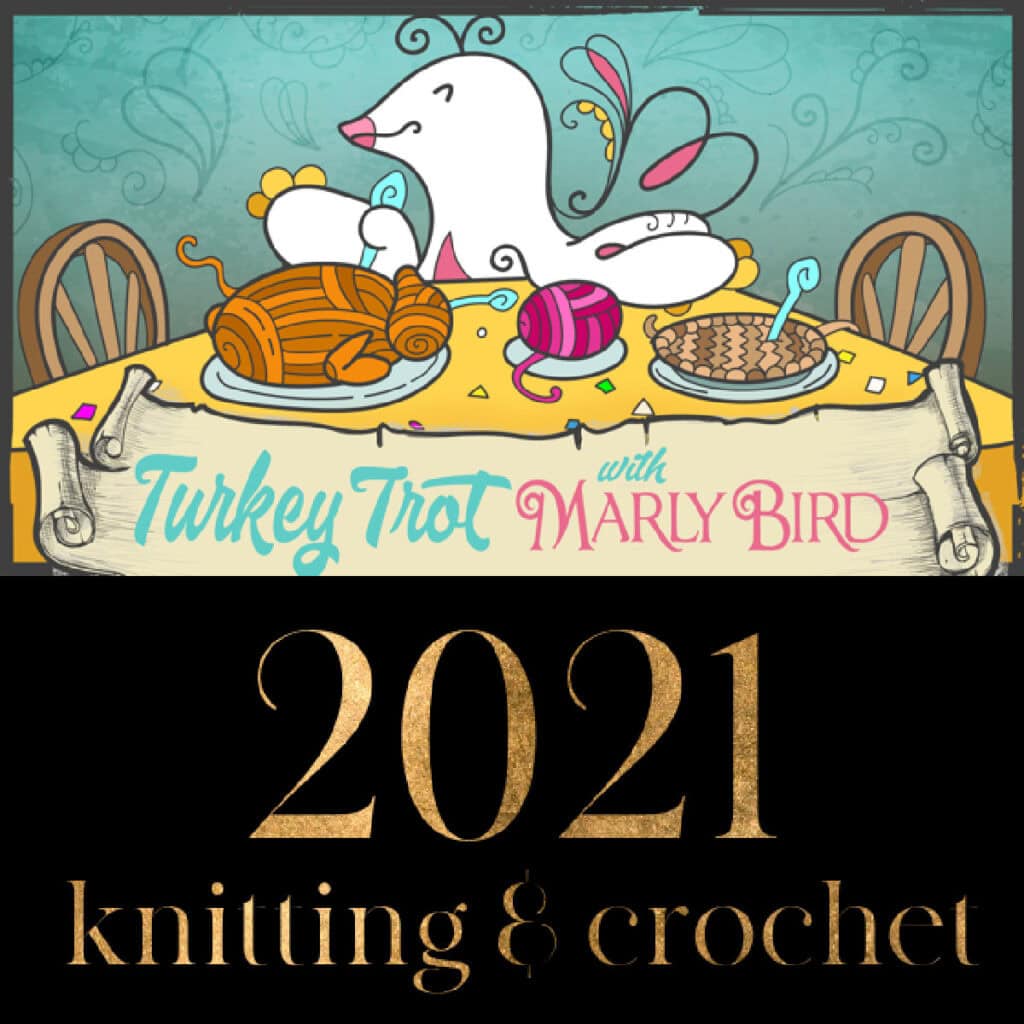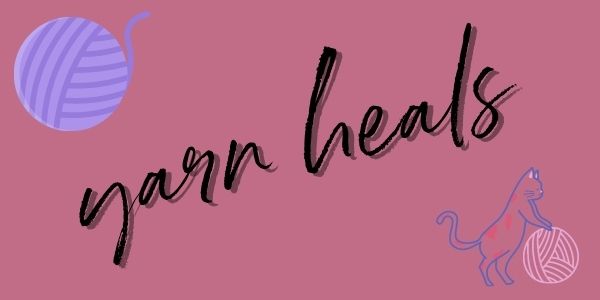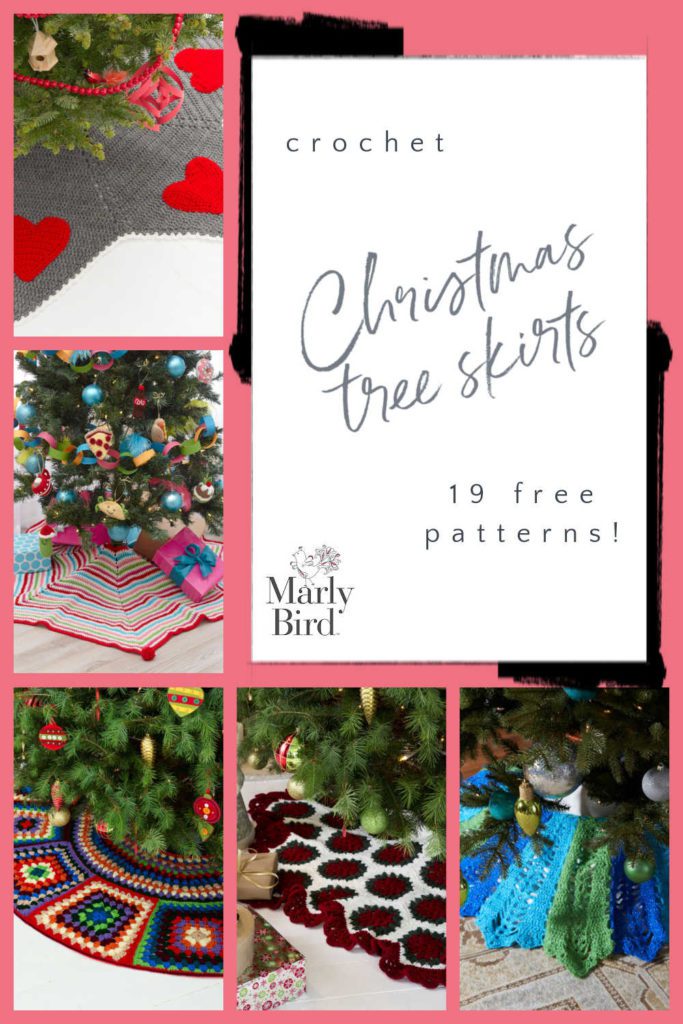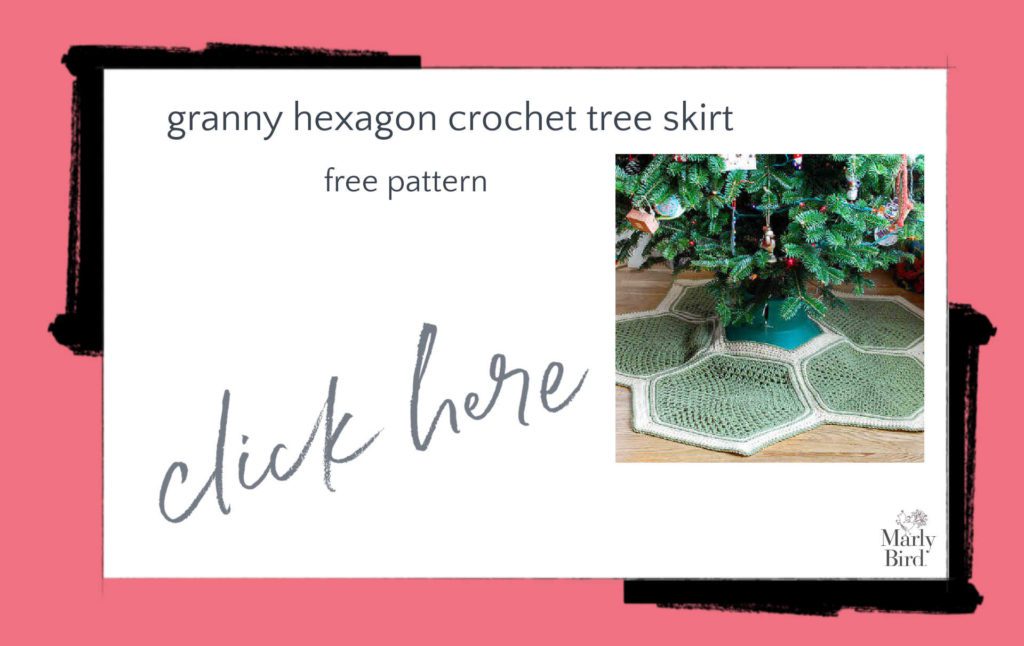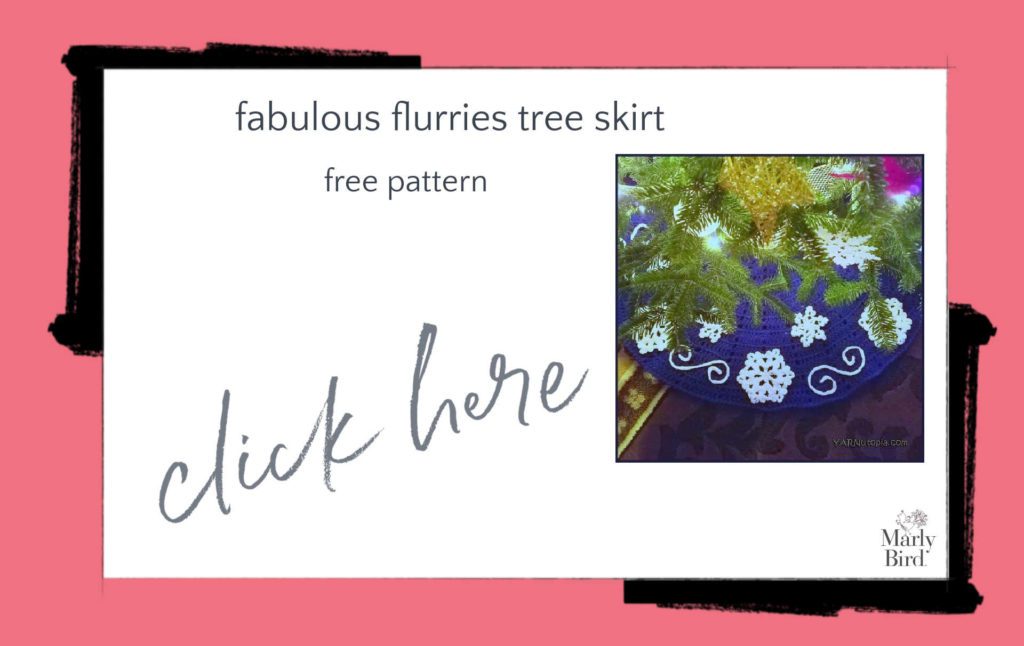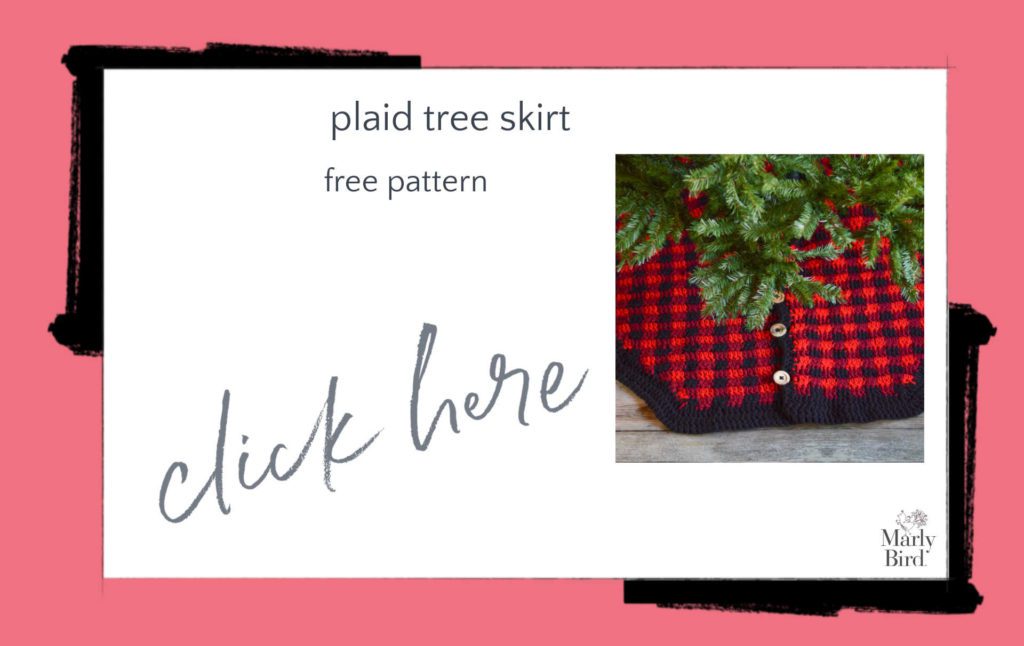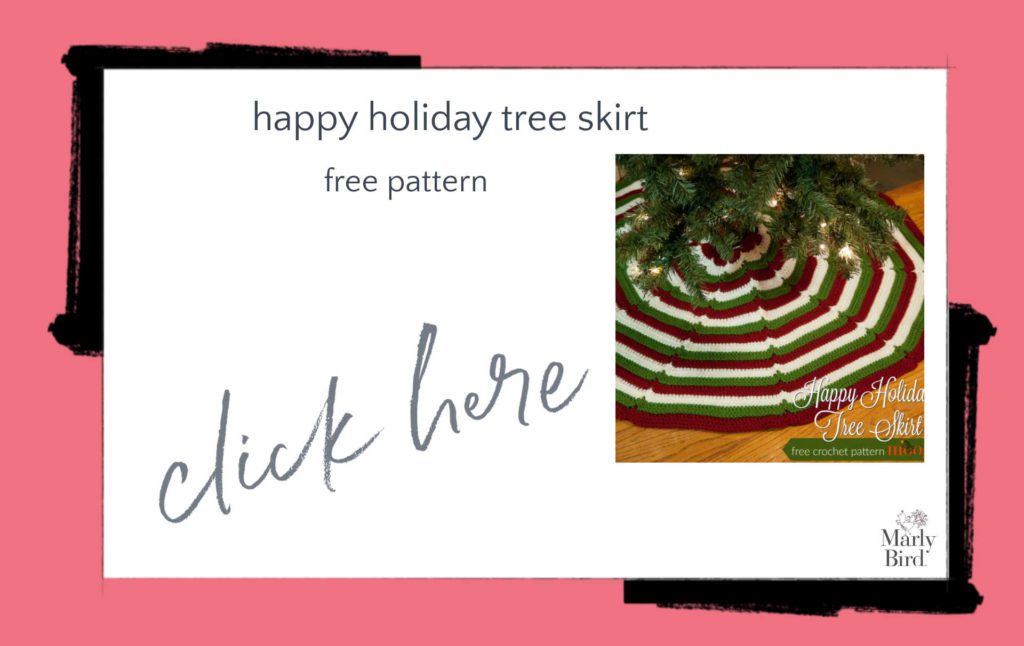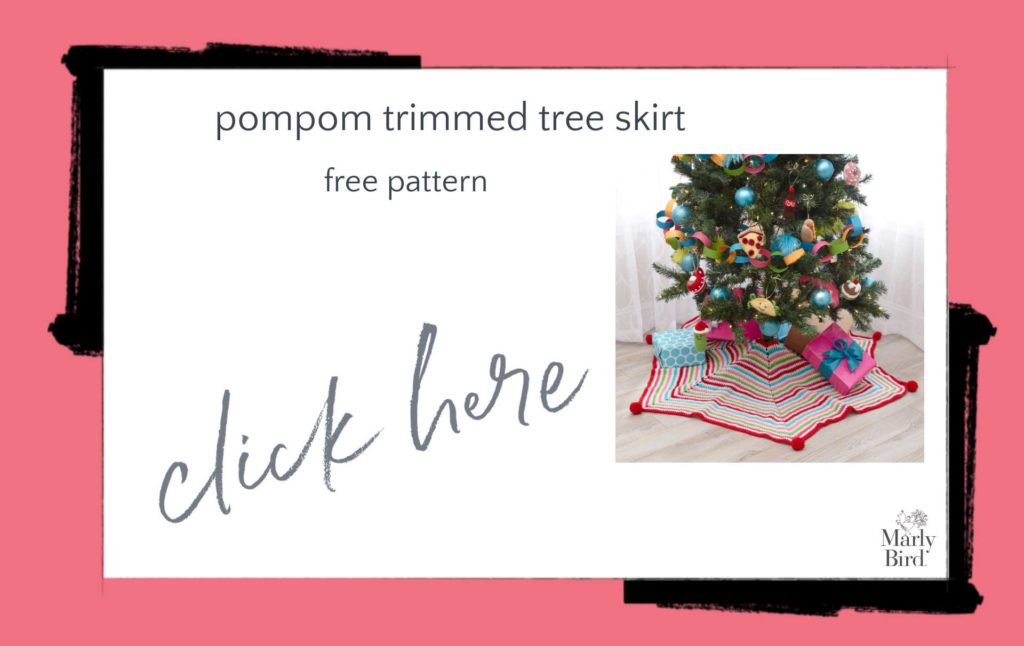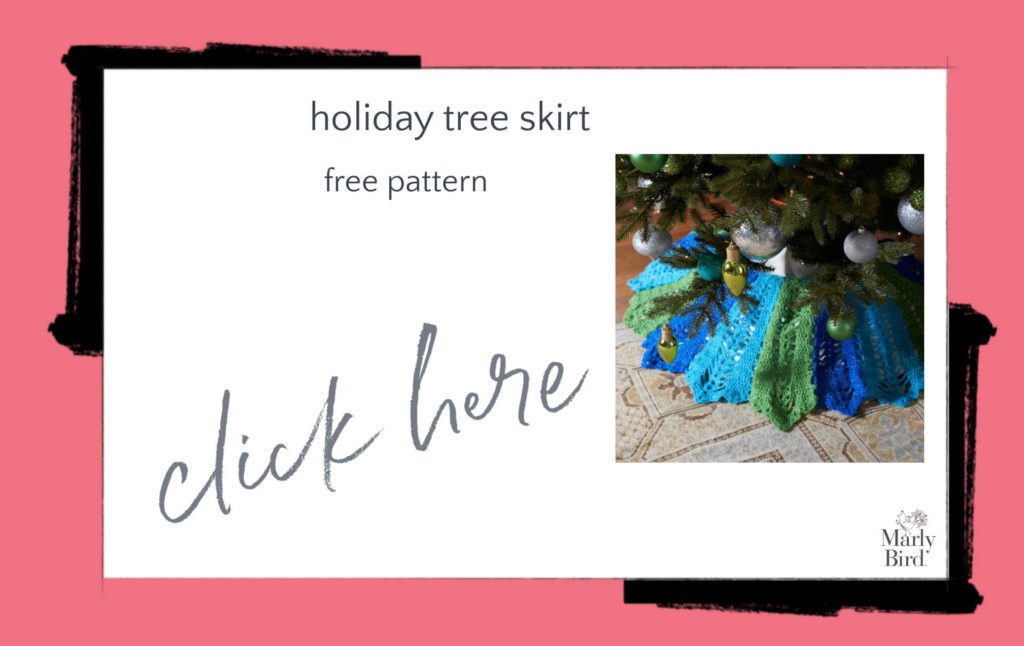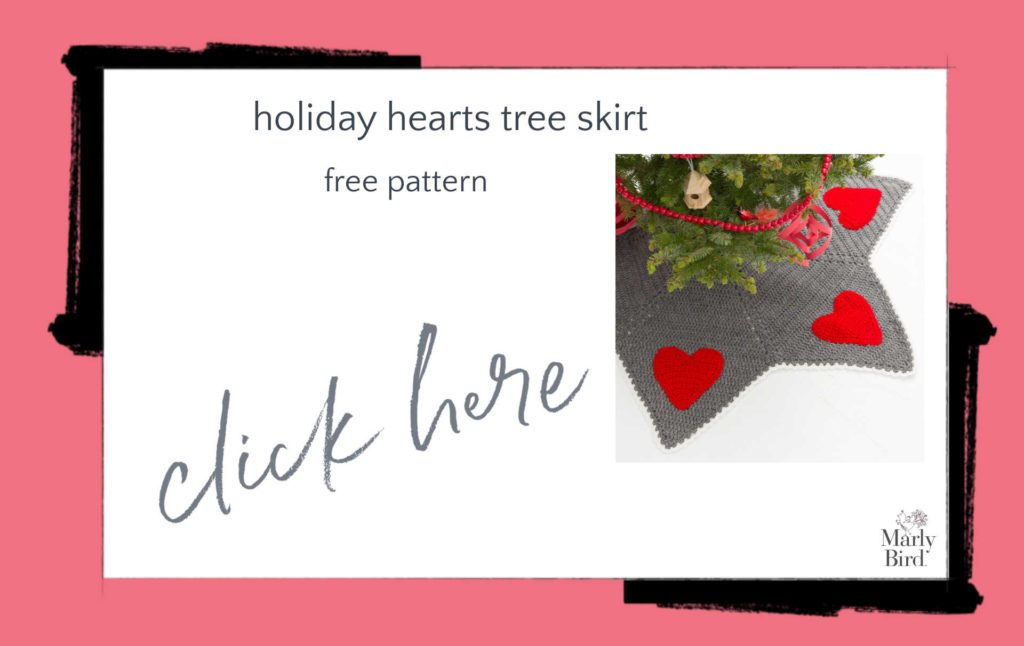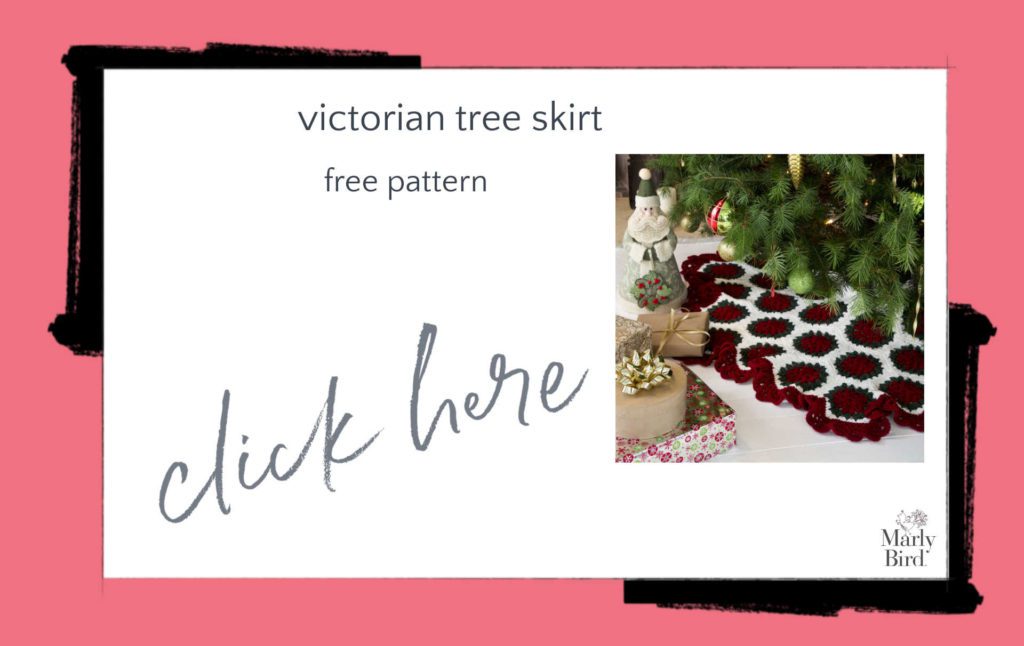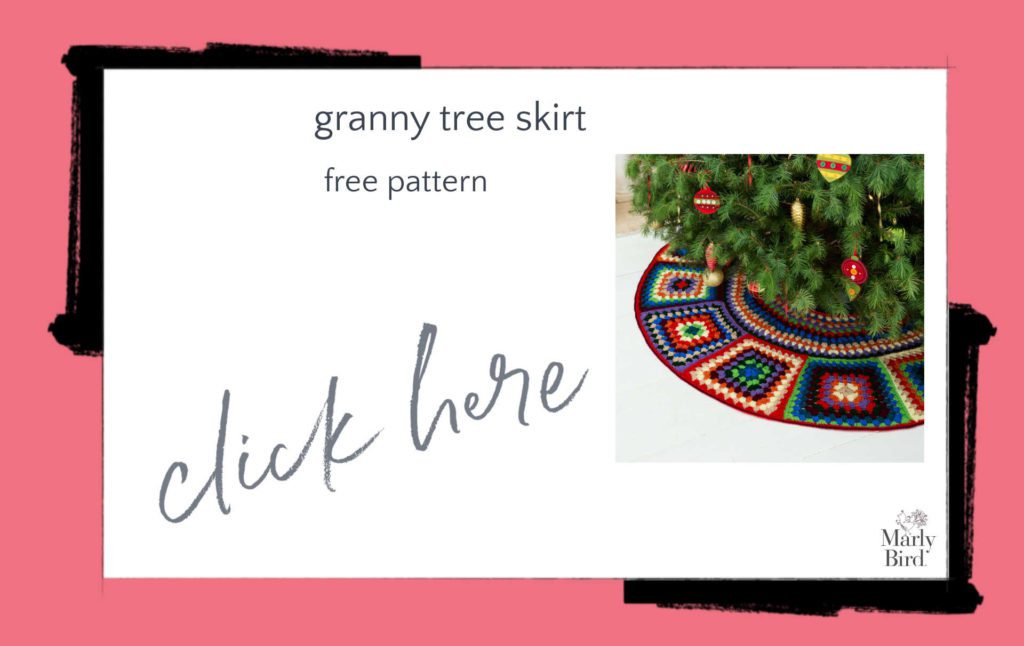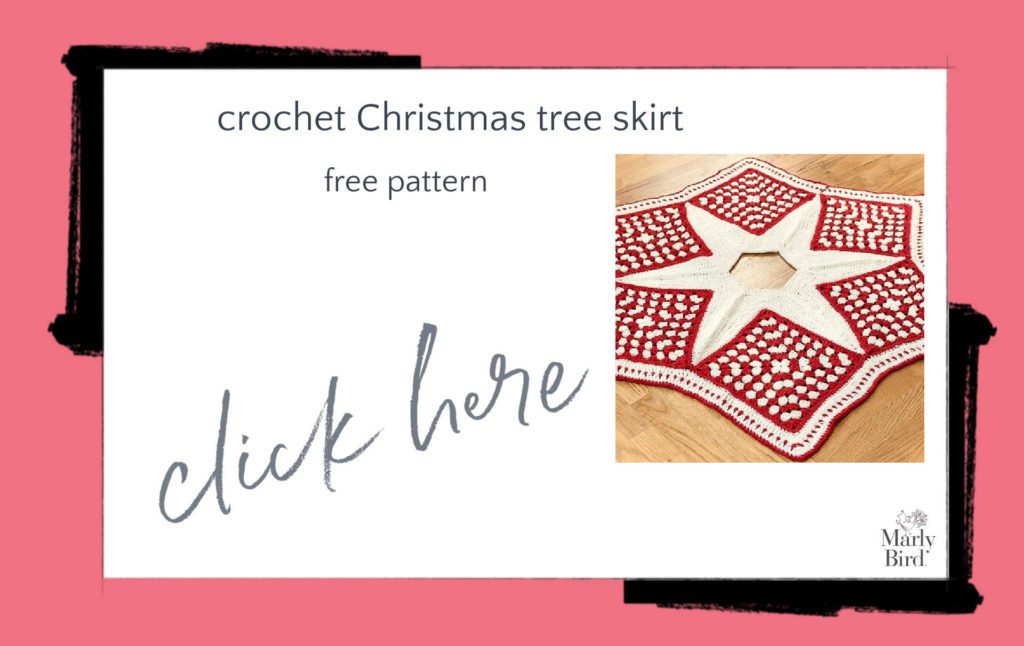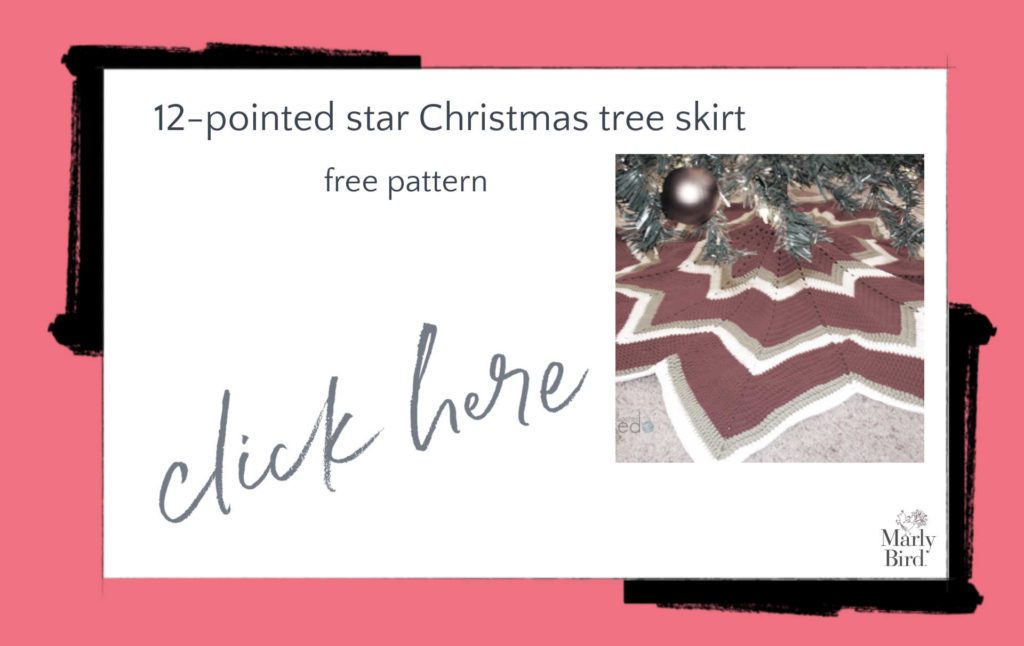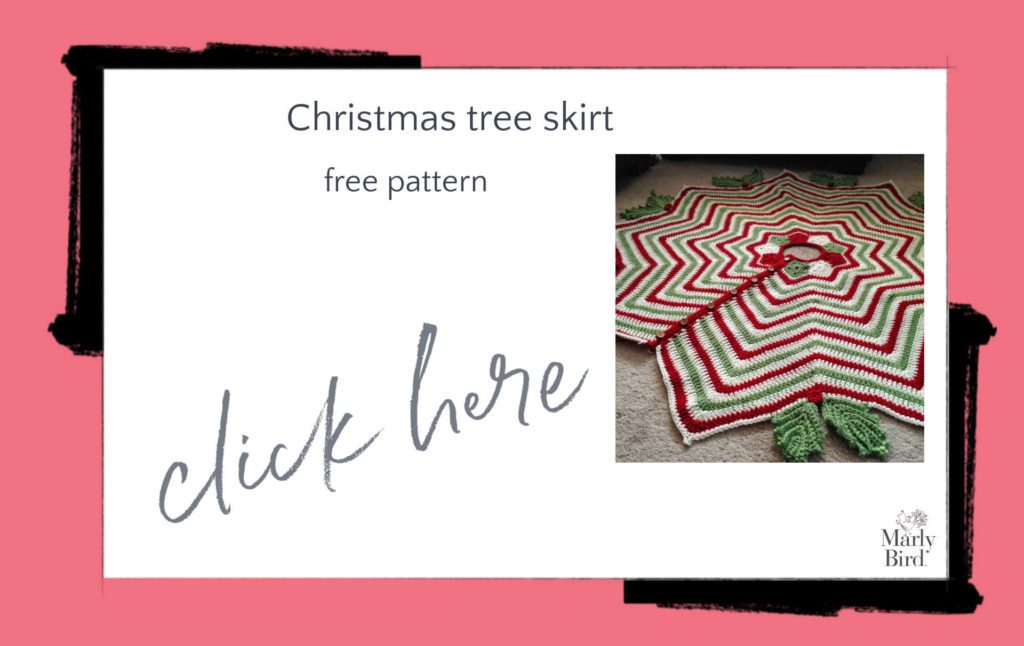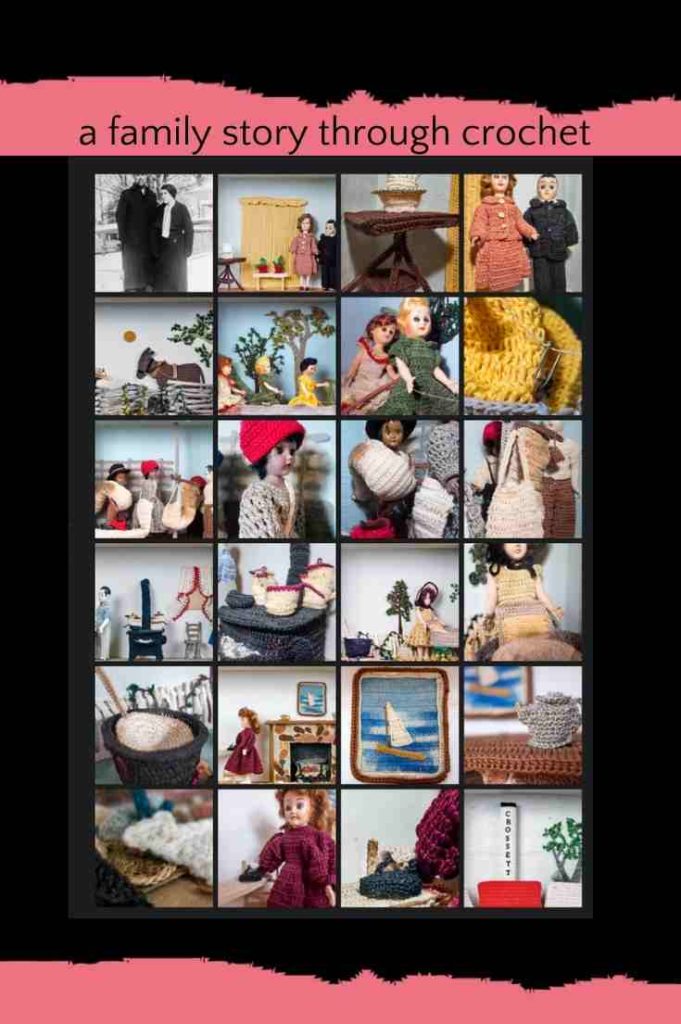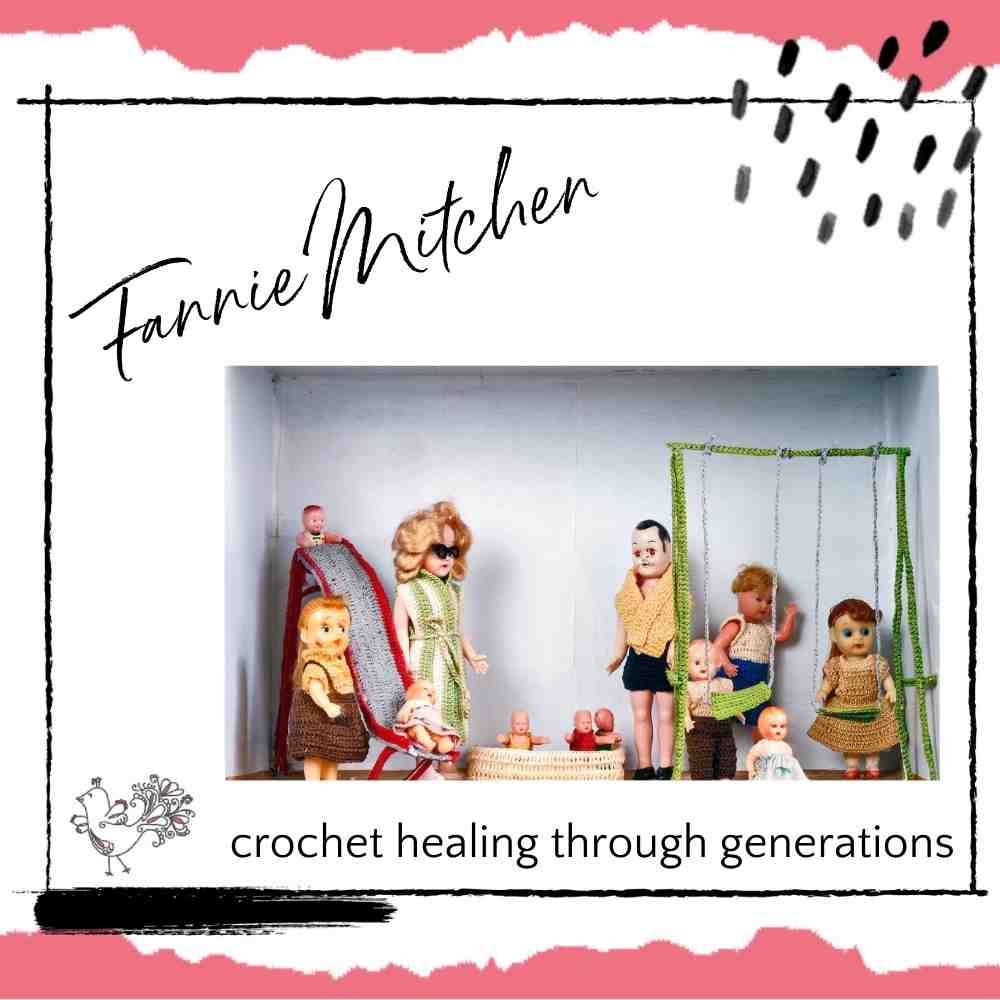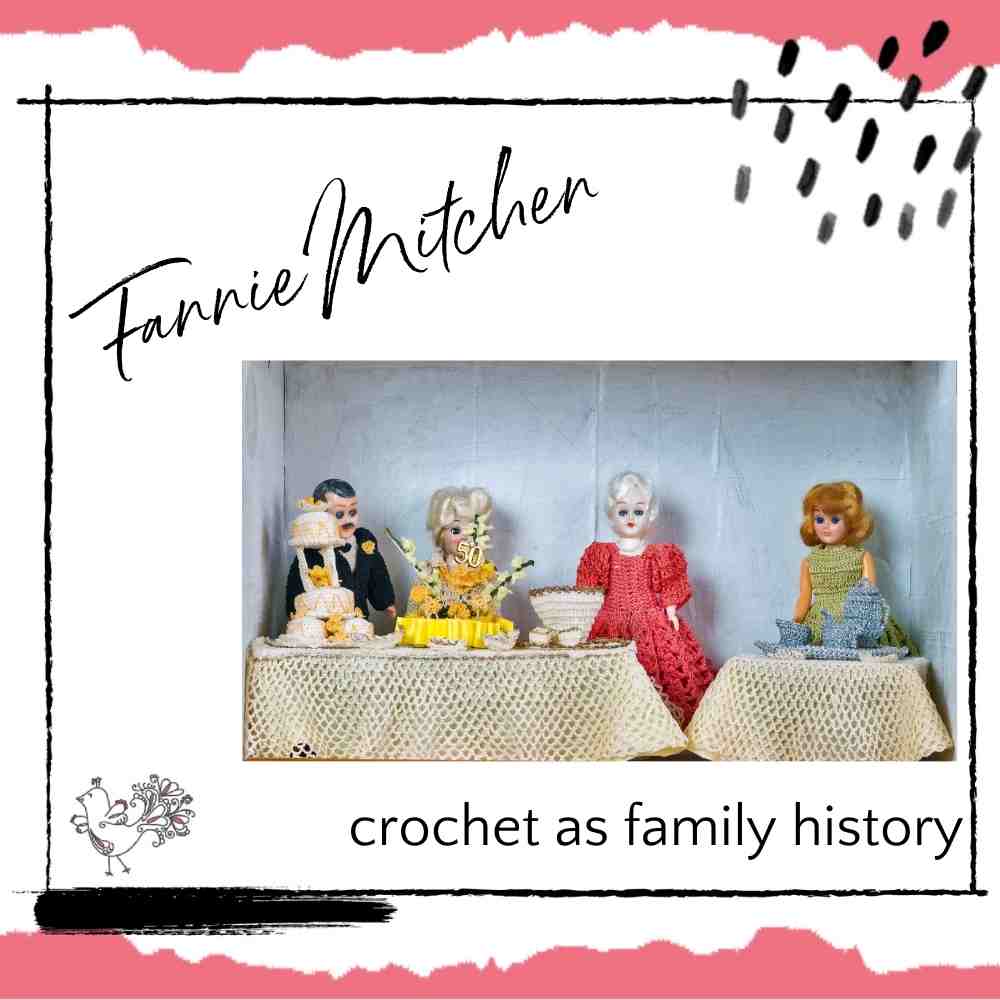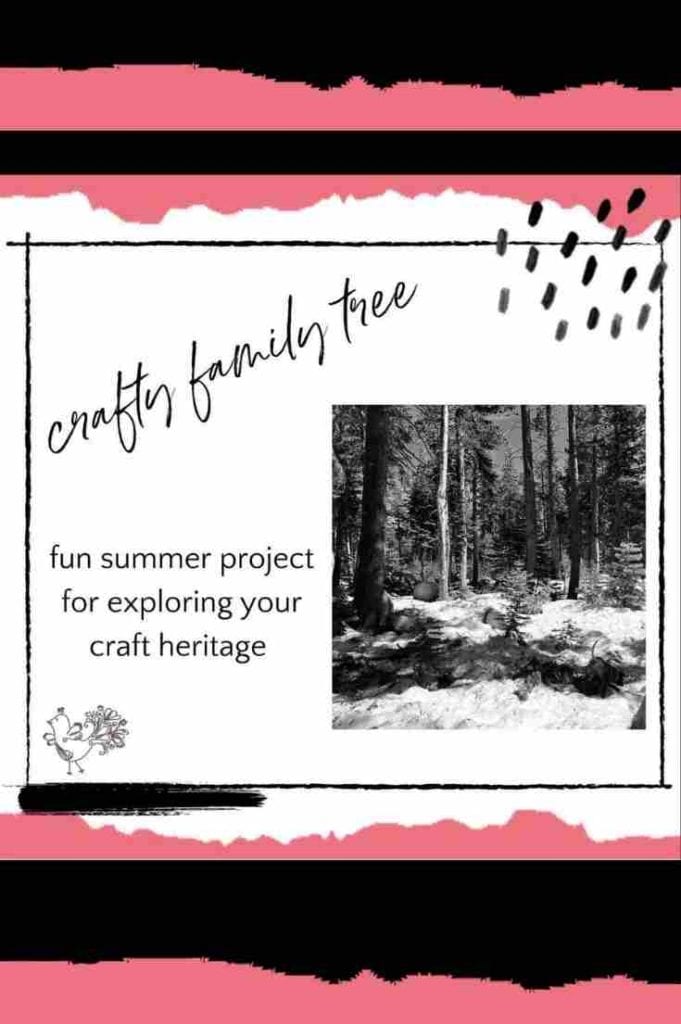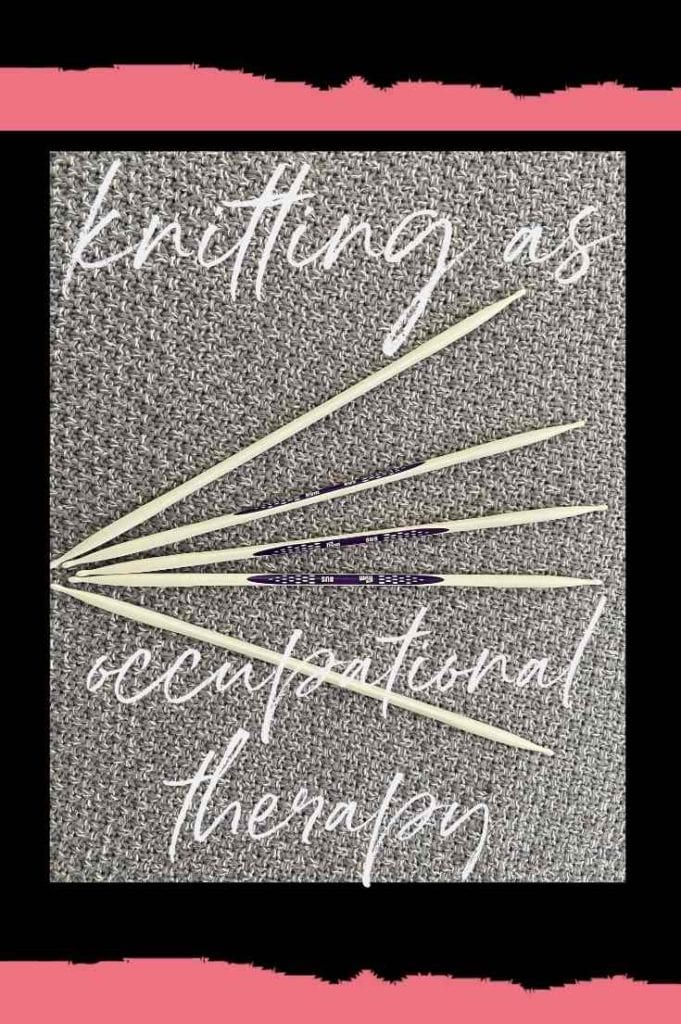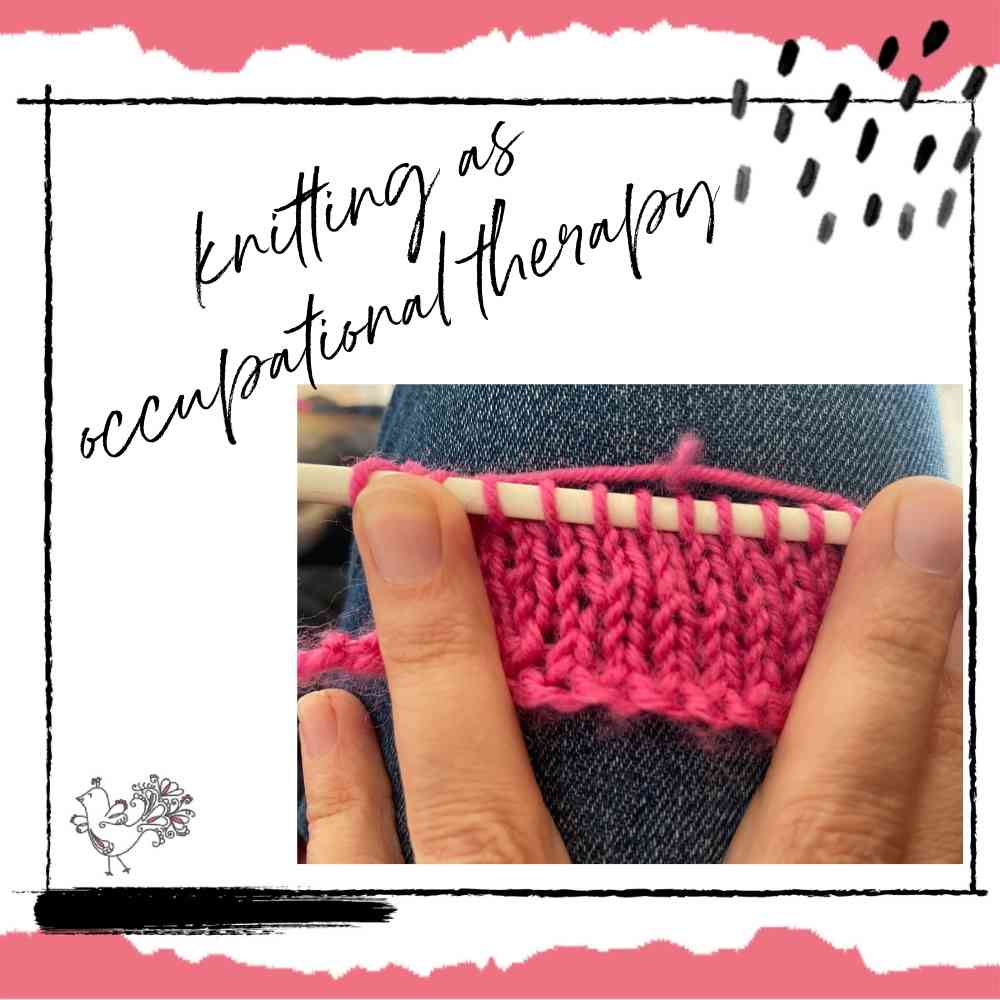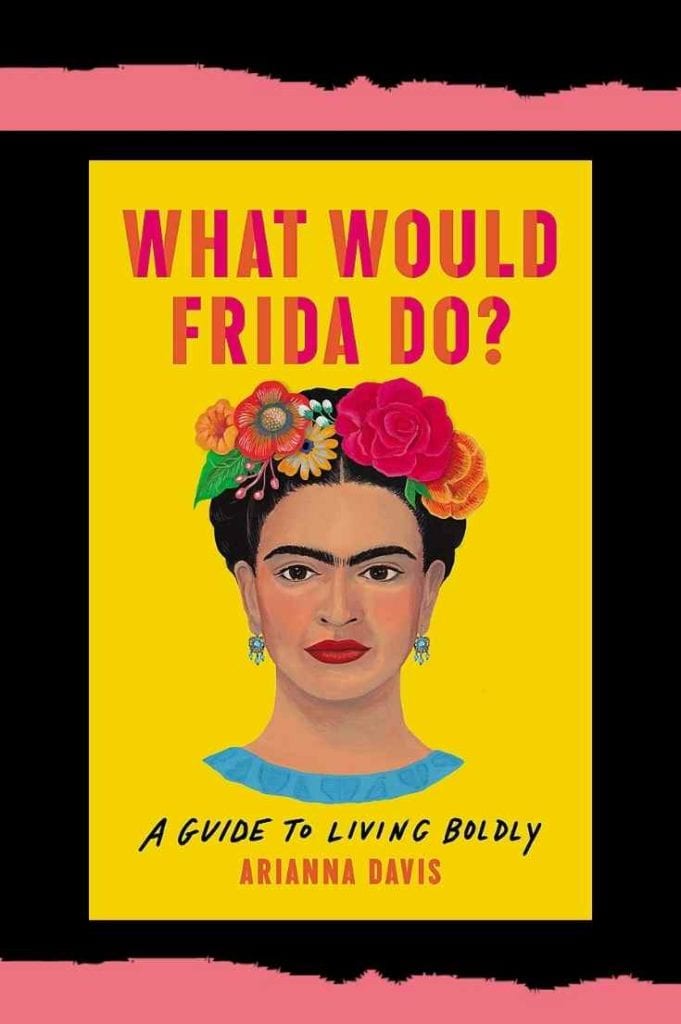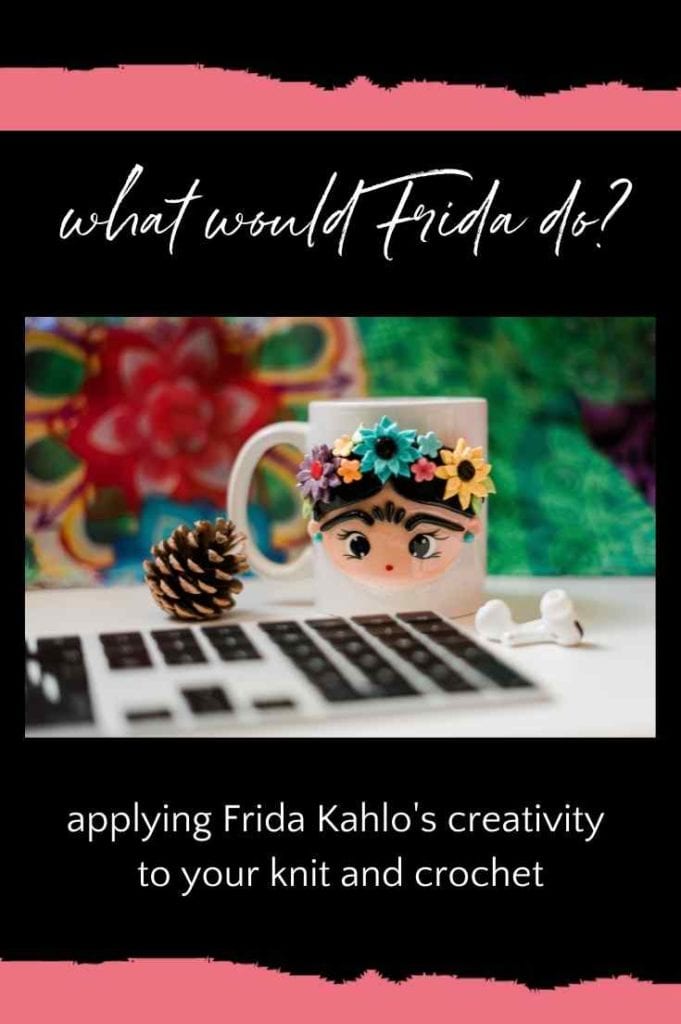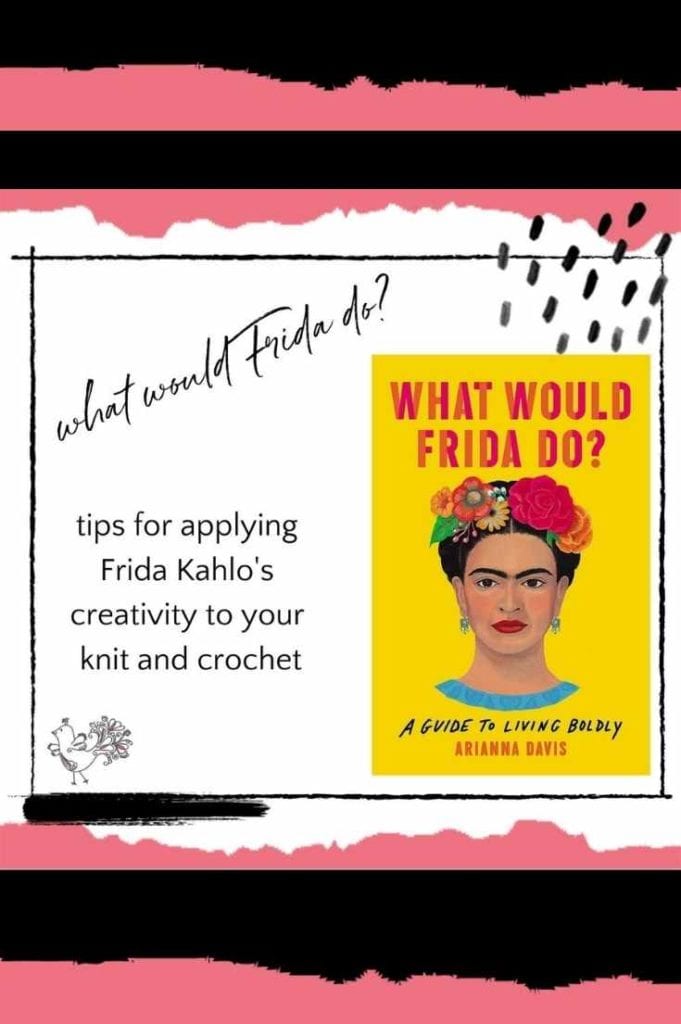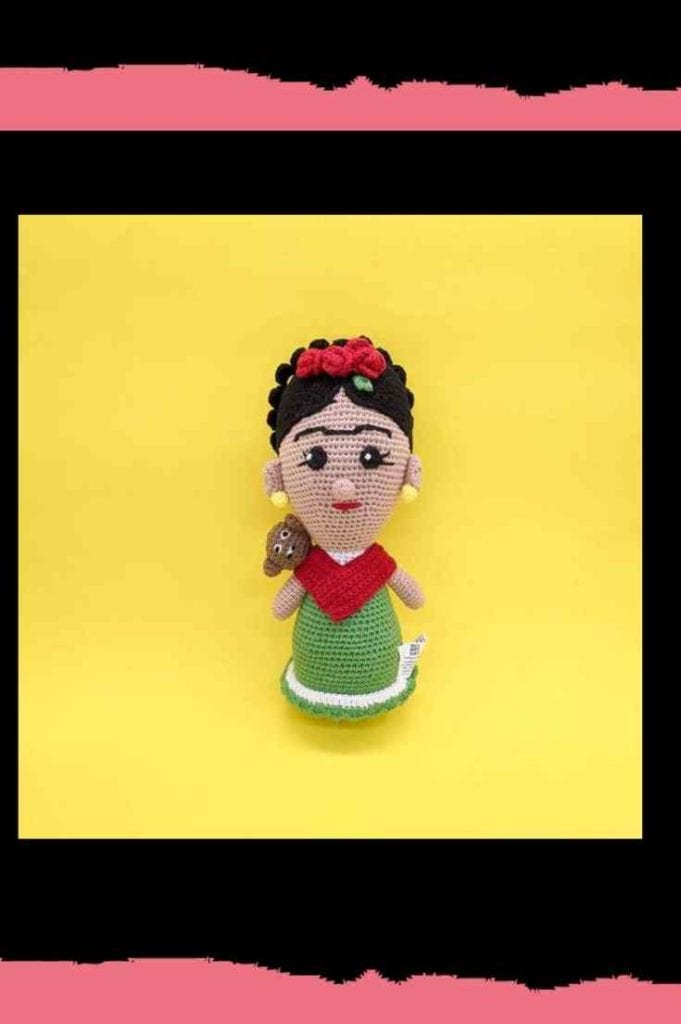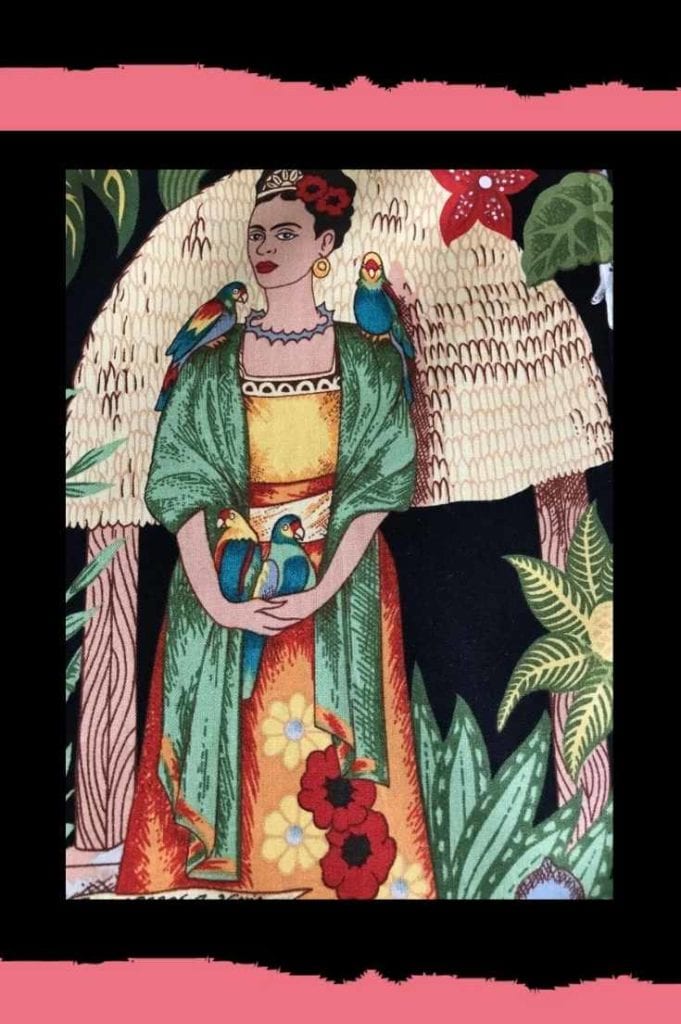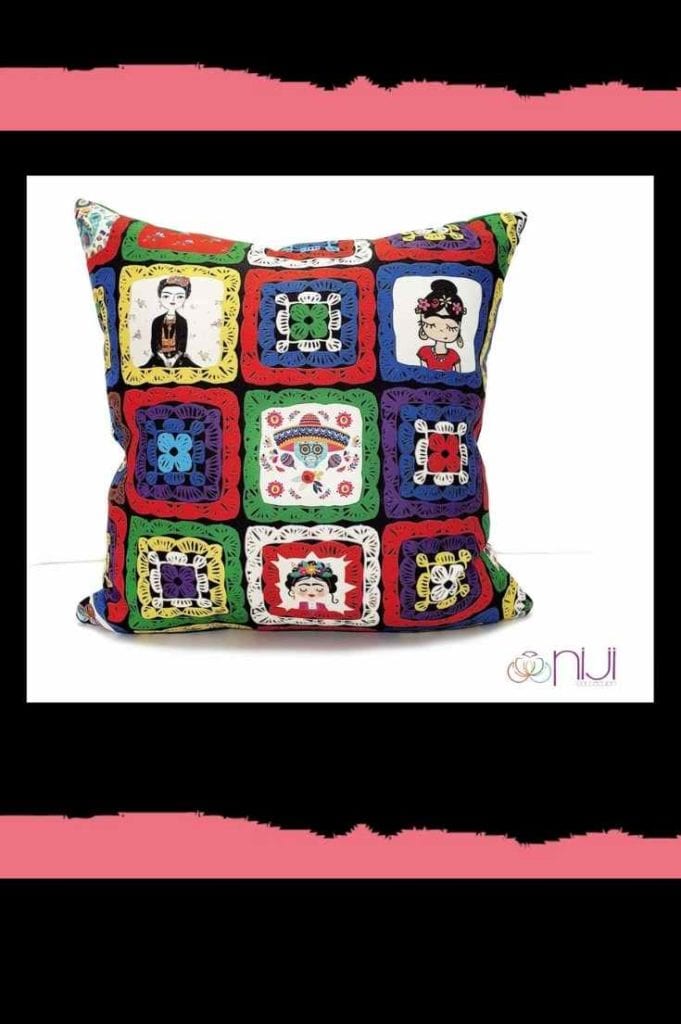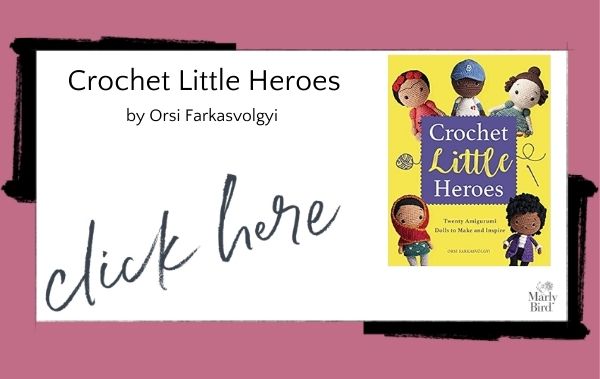Hi, Kathryn here. As you might know, I’m Marly’s blog content manager. I used to run the now-defunct crochet blog, Crochet Concupiscence. When I did, I published a Thanksgiving post every year, sharing exactly why I’m so thankful for crochet. I shared this post last year. And I am sharing it again this year, with an update because several of you on Instagram shared why you’re thankful for knitting and crochet:
Why Are You Grateful for Knitting, Crochet and Yarn?
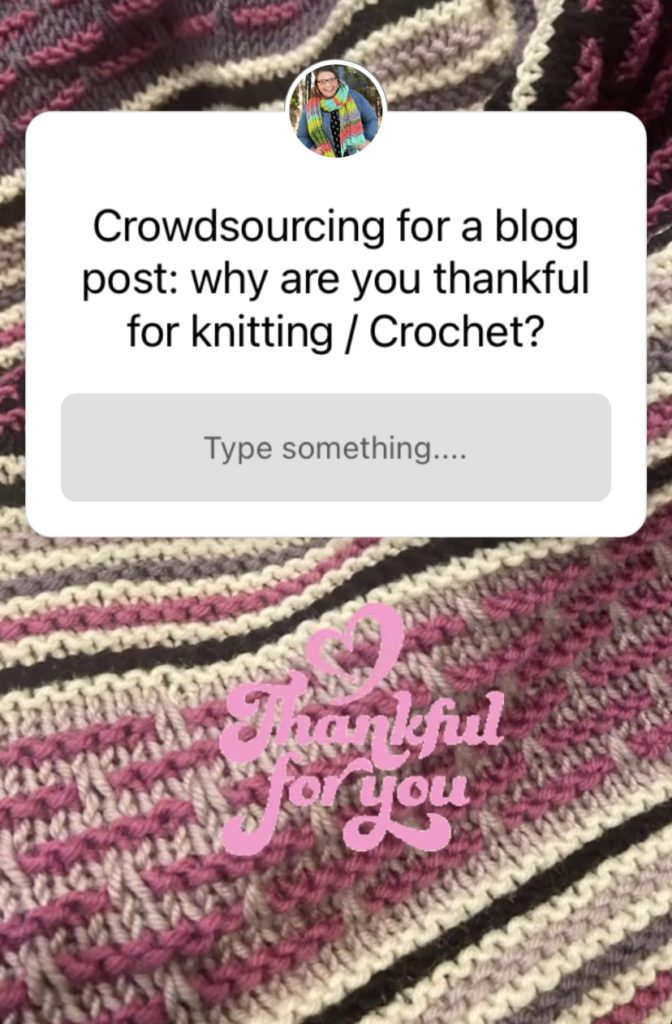
We asked, you answered:
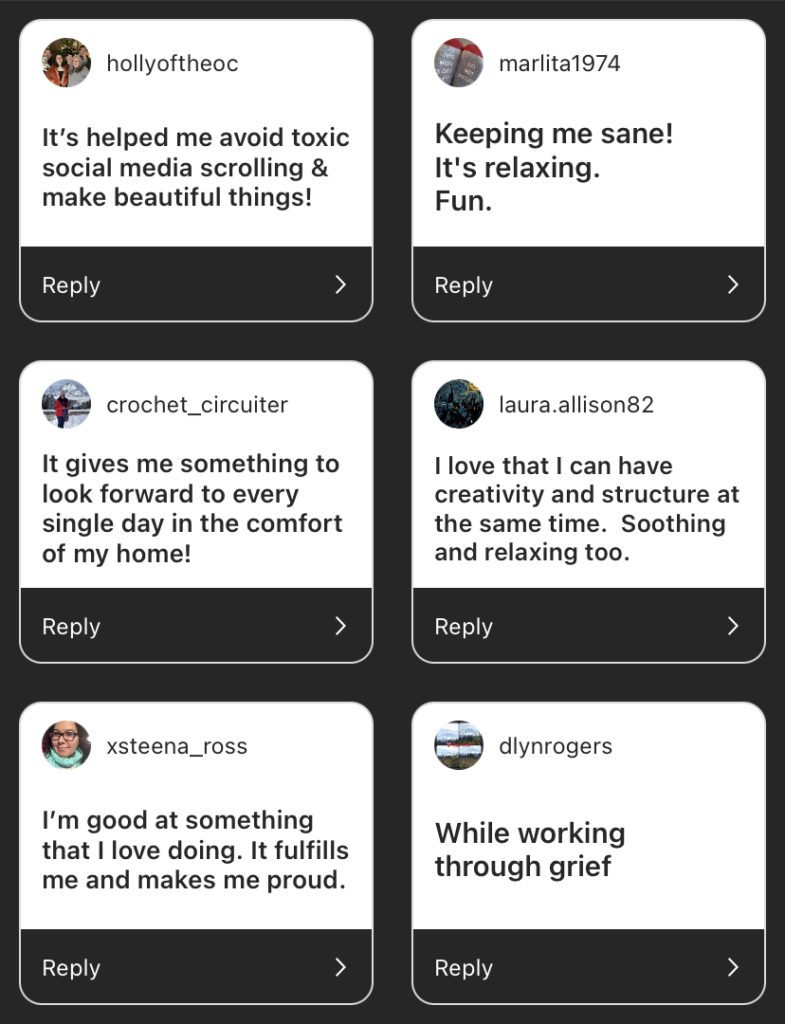
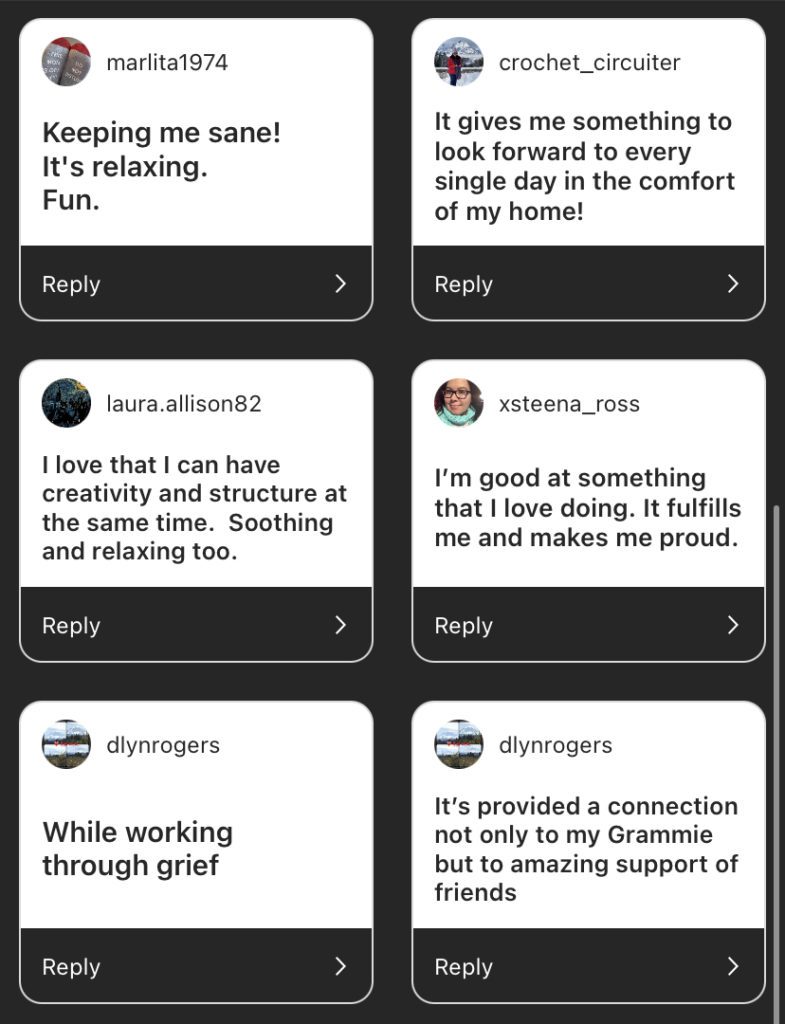
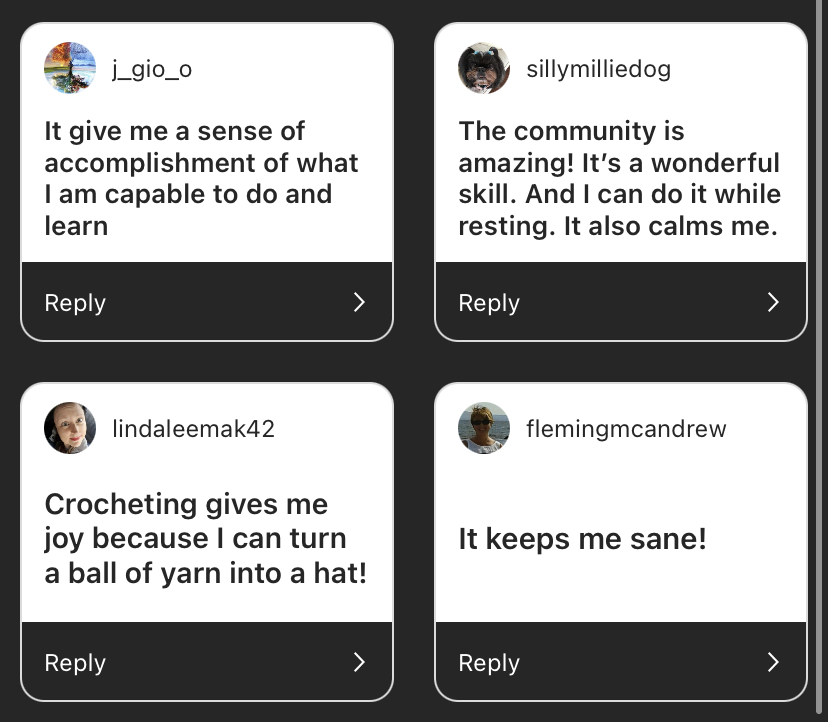
Marly Makes Thanksgiving Special
Before I share the rest of the post, I wanted to say that Thanksgiving is really special here at Marly Bird.
First of all, it’s Turkey Trot season. This annual stitch-along event is such a cool way for the knitting and crochet community to come together. You get to create something fun, connect with other crafters, and spend the whole weekend in crafty solidarity. It’s fabulous. If you haven’t checked it out, go do that right now.
Give Thanks Back to Marly by Signing Up Free for Creativebug
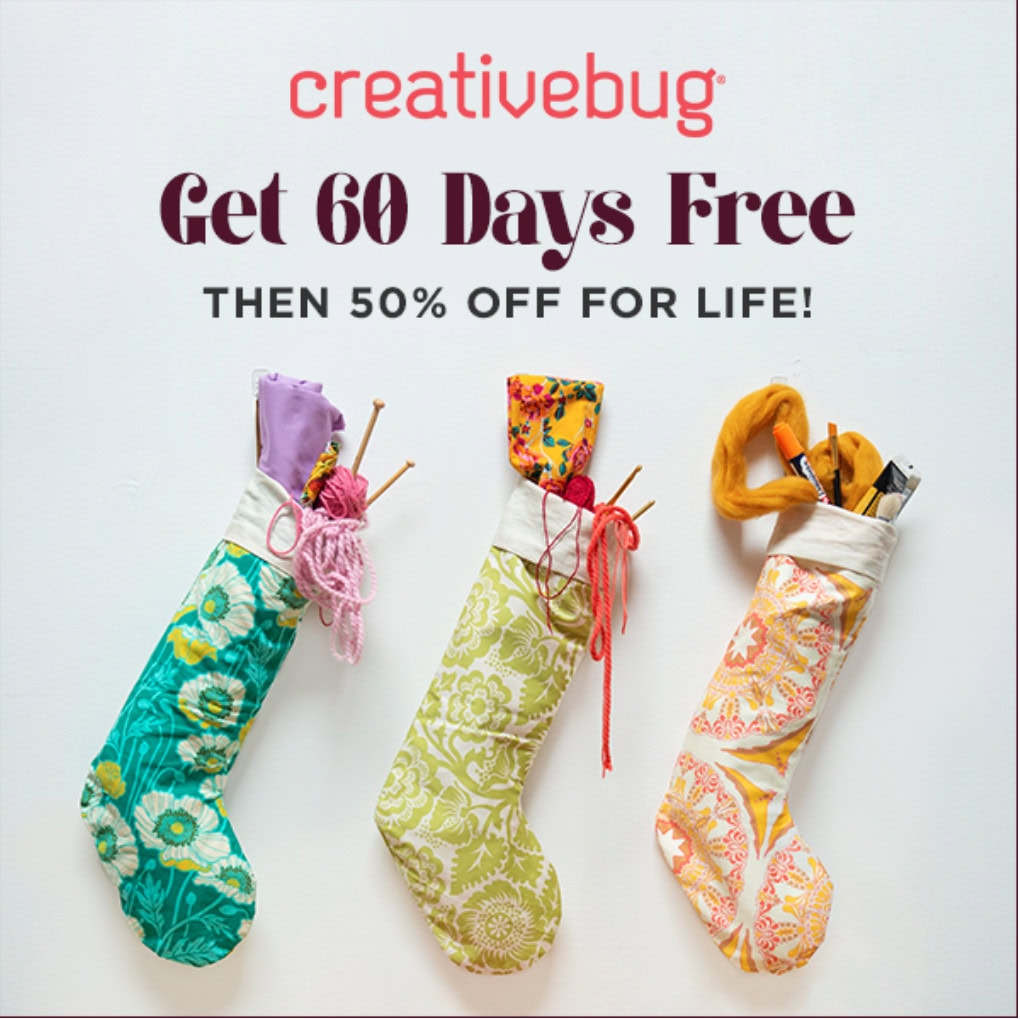
Marly has both knit and crochet classes on Creativebug. There are also so many other craft classes and other forms of craft inspiration there. If you sign up in November, you get two months entirely free. Cancel before that if you don’t want to pay anything. Otherwise, you get half off a membership (so it’s less than $5 per month) for as long as you stay signed up. How does this help Marly? She’s a Creativebug affiliate, so she gets earnings even if you don’t pay anything. Marly gives so much to the craft community for free. She works really hard. So sign up and send others to sign up as a thanks for all that she does.
20 Reasons I Am Thankful for Crochet
Now, on to my guest post. Portions of this appeared in various posts on my old blog over the years. The article in full appeared in the November 2020 issue of Happily Hooked Crochet Magazine. I have a monthly column there about how crochet heals people. And Marly was featured in the magazine recently as well. I am endlessly thankful for crochet, and I hope that the reasons below make you feel that gratitude today as well.
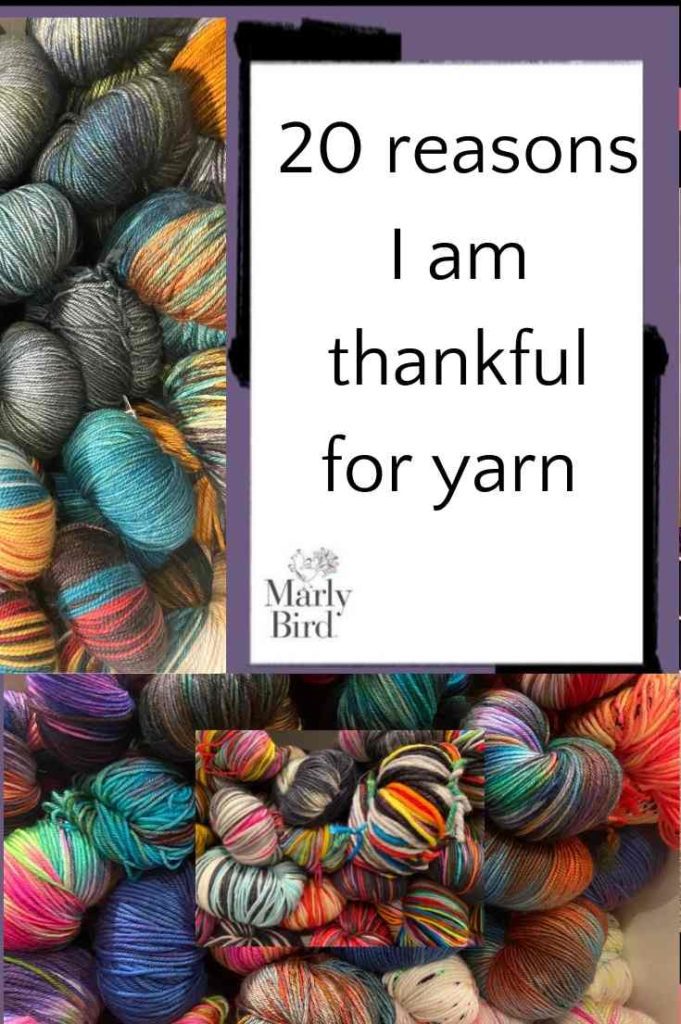
Every Thanksgiving I pause to give thanks for so many things. Most of my things are like anyone else’s – health, family, etc. Especially this year, I think, we are all grateful for the little things. But my list has always included something that isn’t on everyone’s list: the ways I am thankful for crochet. I hope you’ll feel inspired to appreciate, celebrate, and enjoy the craft with us this holiday weekend. Happy Thanksgiving!
I Am Grateful for How Crochet Connects Me to Others
I am particularly grateful for the ways in which crochet has connected me to other people, both online and in real life. Here are five examples:
1. There is a rich social media following for crochet lovers.
Some days I don’t have the energy to do much besides just scroll through beautiful, colorful online images of what other people are making. Even that brightens my day and gives me a sense of connection to a world bigger than my own thoughts. On better days, I am lucky to exchange thoughts, comments, ideas, feedback, inspiration, and more with the other people out there who are part of the #crochet community on Facebook, Instagram, Pinterest, and other channels. I love feeling linked with others in this way.
2. Crochet lets me meet people who are different from me.
All kinds of people crochet. Sometimes I connect with activists who are using crochet in innovative ways to spread socio-political messages. Other times I connect with people who have views that are very different from mine on so many levels. We come from different walks of life. And while it’s certainly important to have hard discussions about issues on which we may not all agree, it’s also important for us to find our common ground. Crochet gives me common ground with so many people who are different from me. That’s a starting point, and for that, I am so thankful for crochet.
3. Crochet connects me to the generations before and after me.
Crochet is a handcraft whose history consists of thousands of individual stories. Until relatively recently, it was passed on from one family member to the next. Many people will share that they learned from a mother, an aunt, a grandmother. My grandmother crocheted. My mom was the one that taught me. Crochet connects me to this visceral thing that they did by hand, that I do by hand. I have crochet items that my mother made. I hope that crochet items I made will be passed down to other generations after me. Plus, I have taught a few people to crochet and maybe they will teach others. In this rich, deep, nearly inexplicable way, crochet connects me to other generations. Just the mere act of crocheting invisibly links my stitches with theirs. I am so thankful for this.
4. Crochet has allowed me to participate in community activities.
I have contributed pieces to a variety of yarnbombing and crochet art installations. Other people put these things together, and I just sent in my piece, but in doing so I became part of a whole. Each year on Granny Square Day, I post a few squares to my digital community, and I watch eagerly as a virtual blanket unfolds from so many crafters participating in this event. I have joined I Love Yarn Day activities online and in person. I have donated crochet to a variety of different charities over the years.
And when crochet designer Marinke Slump passed away, I started the Mandalas for Marinke project, through which more than three hundred people collaborated to contribute crochet mandalas to raise awareness about depression and suicide. I then collaborated further with the artists from Threadwinners and two Southern California galleries to bring that mandala project to the public in art spaces. Participating in community events and activities through crochet can be big or small, but it is always meaningful. I am grateful for this.
5. Crochet allows me to interview people about crafting.
I started a crochet blog back in 2011 (which I sold in 2017). In the years since, I have had the chance to write about crochet for numerous online and print publications, including the monthly Crochet Heals column at Happily Hooked. Crochet is a seemingly neutral topic that people are open to discussing, and yet as we dig deeper together, we learn meaningful, authentic truths about how crochet has impacted our lives. In doing the interviews to write about crochet, I have had the chance to connect in amazing ways with hundreds of creative yarn crafters. I am so thankful for crochet and the role it’s played.
I Am Thankful for the Ways Crochet Heals Me
My mom taught me to crochet as a child but, like many people, I didn’t stick with it. I rediscovered the craft in my late twenties, during a debilitating battle with depression. It healed me then and it heals me today. This is probably the thing for which I am most grateful.
6. Crochet Saved My Life
When I wrote my book, Crochet Saved My Life, I worried that people would think that the title was a ridiculous exaggeration. But it wasn’t. It literally saved me from life-threatening depression. Of course, it didn’t do that alone – therapy, meds, a support system were all critical to my survival at that time. But crochet played a key role. It was one of the few productive, creative, sanity-saving things that I was capable of doing at the time. And once that book was published, I learned that so many other people actually feel the exact same way. This craft can save people.
7. Crochet eases my troubles with insomnia.
I have struggled with sleepless nights for as long as I can remember. I have tried most things that you have heard people suggest. Some work better than others. As I’ve gotten mentally and physically healthier, I can sometimes go months without terrible struggles. But the insomnia always comes back. If you’re not careful, it can make you feel like you’re losing your mind. Crochet helps. Instead of tossing and turning, ruminating and stressing, wondering when I’ll fall back to sleep, I can just grab the project by my bed and relax into making loop after loop until I’m ready to sleep again.
8. I practice self-care through crochet.
There are many different ways that we can take care of ourselves through crochet. In fact, I devoted an entire chapter of crochet exercises to the topic of self-care and self-esteem building in my book Hook to Heal. It can be as simple as taking ten minutes for your own relaxation every day or as detailed as making a spiritual practice out of crafting. Sometimes I crochet a luxurious item just for myself. Sometimes I give myself permission to do nothing else in the day except crochet. In all of these ways, crochet heals me. Because of that, I’m thankful for crochet.
9. Crochet is a tool to practice mindfulness.
By now, I think that we all know that there are many physical and mental health benefits of mindfulness practice. But for many of us, it’s hard to just sit still and meditate. Crochet offers concrete, tangible ways to bring mindfulness into daily life. Before I could engage mindfully in any other way, I could focus and connect to the moment through crochet. In both of my aforementioned books, I discuss using crochet as a mindfulness tool. That’s not because I think mindfulness is trendy. It’s because it’s truly helped heal me day upon day, year upon year. For that, I am thankful.
10. Crochet reminds me that it’s okay to be imperfect.
Crochet is probably one of the most forgiving crafts out there. Don’t like how something is turning out? Frog it and start over. Or try a different stitch or a different pattern. Even when you make a mistake in a crochet project, you can often leave that mistake in without impacting the entire project. For example, dropped stitches in a knit blanket can lead the whole thing to unravel but miss a stitch in a crochet blanket and it’s not really a big deal. I love this about the craft, and I love that it reminds me that life is imperfect and so are we and that’s totally okay. And even the knitters can be grateful – a mistake in knitting is not a big deal in the scheme of things. It’s fixable.
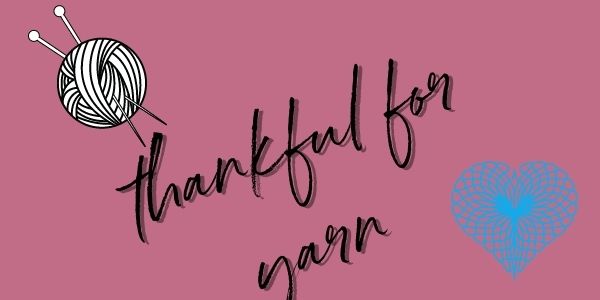
I Am Thankful for How Crochet Has Been a Part of My Career
I am a full-time freelance writer. Over more than a decade of doing this work, I’ve written about a huge array of different topics. But of course, I mostly want to write about the topics I’m passionate about, and I’m so lucky that there has been a market for writing about crochet. I am so very grateful to have joined the Marly Bird team this year!
11. I made decent money off of my crochet blog.
At one point, my now-defunct crochet blog Crochet Concupiscence had more than 600,000 monthly page views. I built that blog from nothing all by myself, and although I made a ton of mistakes along the way, I’m so proud of where I was able to take it. I never made a fortune off of it, and considering how much time I spent working on it, I really didn’t make much at all. But thanks to advertising, sponsored posts, collaborations, and promotion of my other stuff I was able to at least make the blog sustain itself financially. And then in 2017 I sold the blog. There were pros and cons to that but to be able to create something on a topic that you love and have other people want to read it is a fulfilling thing.
12. I have loved writing for other websites and magazines.
I am so thankful for the platform that people have given me to share my love of this craft. Honestly, I am humbled every time that crochet authors, designers, and makers share their thoughts with me. I am appreciative of every small and large publication that has paid me to share my writing on crochet. Especially, I love that there are people who get paid for other parts of crochet – creating patterns, doing technical editing, putting it all together for a business … the fact that any of us can make any money doing this thing we love is wonderful. Again, huge gratitude to Marly for letting me join her team to share crochet here. It makes me thankful for crochet in new ways!
13. Crochet taught me about self-publishing.
I wasn’t sure that there would be a market for Crochet Saved My Life. For that reason and many others, I self-published that and several other crochet-related books. It was a learning process. It wasn’t easy. I made mistakes. But it has always been an exciting journey. I’m grateful for the tools available to allow me to self-publish. And I am hugely grateful for the people who have helped me every step of the way. Crochet designers and authors who publish themselves or with small or large publishers are putting great things out into the world. Of course, Marly has published lots of books; get them at Leisure Arts.
14. Writing about crochet has allowed me to reach others.
After I published Crochet Saved My Life, so many people reached out to me with their stories. Since then, I’ve gotten a master’s degree in counseling psychology, but at the time, I didn’t know much about helping others. And yet, through writing about this craft, I was able to reach a few people. My heart touched theirs and in turn they touched mine back. It doesn’t matter whether you’re a writer or not. If you have ever crocheted something for someone else or taught them the craft, you’ve probably touched someone’s life. And if you share your crochet on social media, you may be inspiring people without even knowing it. People don’t always share how you’ve touched them, but through crochet, there’s a chance that you have.
15. I’ve bartered my crochet skills.
Crochet is a skill. Not everyone can do this craft or wants to learn. But I can, and so I’ve been able to trade on that skill. I don’t sell my own crochet work, but I’ve definitely bartered it. Someone wants a handmade something and I’m able to make it and in return they can give me something. I love bartering. It’s about saving money but it’s also about trading resources within community. I believe in that. And I am grateful for crochet because of it.
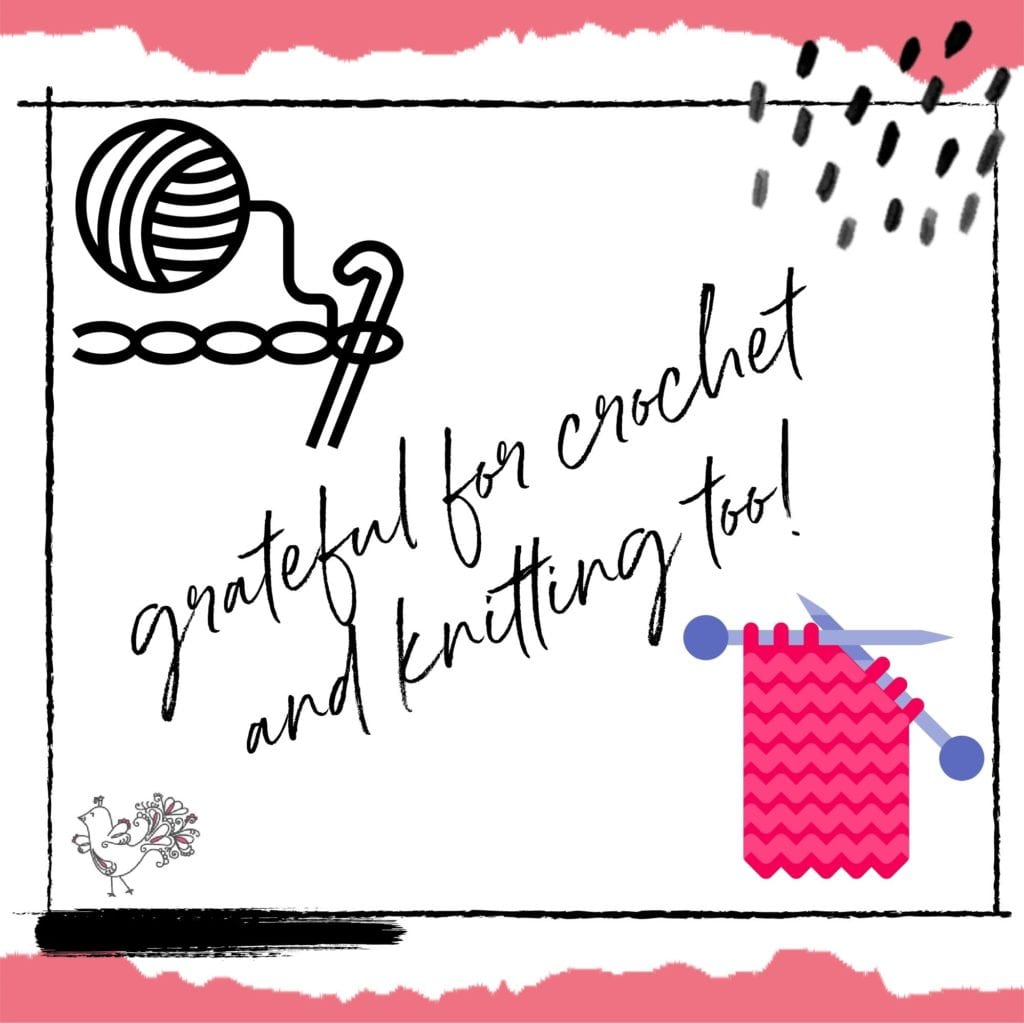
And Here Are Other Reasons I’m Grateful for Crochet
16. Crochet offers a way to support other people financially.
I believe in buying local when I can. I believe in supporting independent entrepreneurs and small business owners. Crochet gives me a practical way of doing that. I need supplies for crochet, and whenever possible, I try to get those supplies directly from other people. When I buy yarn, I try to support fiber farms, indie yarn dyers, and small yarn stores. When I want a crochet pattern, I try to buy individual patterns or books from independent designers or small publishers. And even when I can’t buy something, I try to promote the good stuff from the great people – through reviews or sharing on social media or otherwise spreading the word.
17. Crochet taught me to embrace being an artist.
I was always creative, but I never felt comfortable calling myself an artist. And I generally felt uncomfortable with “art” since I felt like I couldn’t paint or draw. Crochet was this great entry into an artistic world. When I first started, of course, I followed other people’s patterns closely. But over time I started changing up yarn choices, playing with stitches, making my own things without a pattern. Over time, I began to see that this was an art form, that I was making art. Sure, it might be humble art. But did you know that there was an entire movement of crochet artists in the 1970s (particularly those who attended the Platt Institute in New York) who turned the art world on its head by celebrating fiber art and other domestic arts? This is no small thing. And I am proud to be a part of that legacy, in even the smallest of ways. Side note: If you’re interested in crochet as art one of the best resources out there is The Fine Art of Crochet by Gwen Blakley Kinsler. And my book Hook to Heal shares 100 exercises for creativity in crochet.
18. There is always something new to learn in crochet.
One of my very favorite things about crochet is that you don’t need to know much to make something useful and yet there is always more to learn. In other words, you can learn just a few basic stitches and with that can make blankets, scarves, and other things. However, if you want to learn more, you can … and you can keep going and going. There are so many different stitches and techniques and ways to put different skills together that I’m not sure I could ever learn it all. I love that when I want to just relax, I can rely on old favorite stitches, but when I’m ready to stretch myself, it’s easy to find something new to learn in crochet. And, of course, Marly is a stellar teacher. Visit her YouTube for terrific knitting and crochet tutorials.
19. Crochet literally warms me.
Is there anything cozier than settling in under a crochet blanket in front of a fireplace? When I think about the things for which I’m thankful, it’s not just the big things that matter but also the everyday small little things. When I focus on little joys, my day is better, and each good day adds up to a good life. There are so many little ways in which crochet brightens my day and one way is that it literally warms me up.
20. Crochet gives me joy.
Crochet is fun. It’s creative. We can play with yarn. I like doing it. Crochet gives me pure joy each and every time I engage with the craft. Joy is certainly something I am thankful for.
Happy Thanksgiving!!! Feel free to share why you’re thankful for crochet and/or knitting in the comments below!

